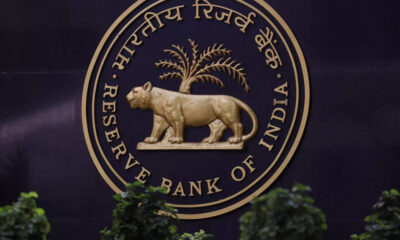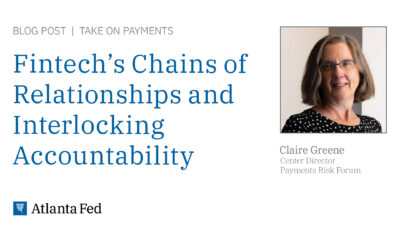Fintech
In the Vault: New Applications in Fintech with Plaid’s Zach Perret and Marqeta’s Simon Khalaf

ABOUT IN THE VAULT
“In the Vault” is a new audio podcast series by the a16z Fintech team, where we sit down with the most influential figures in financial services to explore key trends impacting the industry and the pressing innovations that will shape our future. Follow this show on our podcast feed so you don’t miss an episode.
In this conversation, which took place at a16z’s Connect Fintech event, a16z General Partner Angela Strange, Plaid CEO and cofounder Zach Perret, and Marqeta CEO Simon Khalaf discussed how AI will shape the future of banking, the battle between payment rails in the U.S., and how there’s still opportunity to transform the basic credit card into a fully digital product.
Episode Transcript
This transcript has been condensed and edited for readability and clarity.
Angela Strange: Good morning. Today I’m excited to be talking with two infrastructure companies that help run many of the companies in our industry. I’d like to welcome Zach from Plaid and Simon from Marqeta.
We’re going to try and cover three meaty topics in a short period of time. First, generative AI, of course. Then: what’s going on with the shift in the payment rails? And then, regulation as it relates to open banking and, in particular, sponsor banking. So let’s start with generative AI.
Simon Khalaf: No joke? You promised us you were starting with a joke.
Angela: I have many jokes. None of them were quite acceptable for the audience.
Simon: I have one!
Angela: Okay, go for it.
Simon: So we were doing an introductory call with Zach and my wife passed by and she’s like, “He’s talking to Fabio.” And now, like, the only thing I can think of when I see Zach is Fabio.
Zach Perret: So to try to distract from this, the only joke I can come up with is that if you cover the 6 and the Z in the a16z logo, it says “AI.” Okay. That’s all I have.
Angela: That was actually pretty good. We’ve been telling a lot of our portfolio companies to buy the .ai domain, so if we’re eating our own medicine, we should do that.
Okay, let’s dive into AI. As Alex mentioned yesterday, one of the unique things of this platform shift is there’s a top-down mandate in every company to figure out AI, experiment with AI. So there’s a lot of experiments going on. But I thought a good place to start would be to fast forward 5, 10 years. What is an area of financial services that you think could be dramatically transformed with generative AI, and how? Zach, I’ll start with you, given you’ve got the best AI joke.
Zach: So I think it’s somewhat hard to tell where exactly things are going to go. I think there are some very obvious candidates over the next, call it 5-ish years, 3 to 5 years, somewhat regulation-dependent that will be massively transformed through AI. Two come to mind for me.
First is credit modeling. That one should have a massive change, but currently is very regulatorily constrained in the U.S. Our European team is doing a bunch of work on it because there’s no FCRA in most of Europe. And so I think that one will have a major shift. The second is fraud detection. And this is something that is much more real-time, and can happen much more in real-time.
People ask us what we’re doing in AI, and the answer is nothing interesting. We’re doing the same things that all of your companies are doing. We’re making our engineers more efficient. We’re working on support. Uniquely to Plaid, we’re working on making transaction data cleaner with AI. But the most interesting thing that we’re doing by far is working on our identity verification fraud detection tooling.
As most of you know, the industry standard, more or less, to verify a user when they’re doing identity verification is to send in a photo of your ID to do some basic data entry, maybe some document scanning, and then to do a selfie liveness check. And every single one of those things can now be manufactured with AI, the selfie liveness check being the scariest.
So I think it’s like a matter of months, and frankly, it’s already happening, when we’re going to start seeing things like AI-generated, Sora-generated liveness checks. And the question is: can we detect them, or has this major pillar of fraud reduction throughout financial services just been completely destroyed? And now we have to shift to passkeys being the best-in-class thing, and even that has different utilities.
Angela: And you probably read this: last year fraud hit $10 billion in losses just for consumers. We have some fraud companies in the room, I think, that are hoping to solve this. It’s spawning interesting companies, like AI or Not. And so I think many of the generative AI [applications] are going to help us, but it turns out fraudsters have it too, and that’s going to be a super challenging vector. Simon, what do you think?
Simon: I’ll get to genAI. Before getting to genAI, I just want to celebrate the moment that a payment vehicle became a digital product. There’s so much opportunity here, because if you think about a payment card, it’s the most adopted technological product ever invented — more distribution than Google and Facebook combined, more distribution than clean water. And it’s still a piece of plastic, for many.
But when you think of this payment product as a digital product, it is the most addictive product ever invented. I’ll give you a stat. So right now, the most addictive product — well, according to the Senate and the Congress — is TikTok. And if you look at its usage, adjusted for the U.S. adult population reach, is 2.1 times a day. But a payment card is used 2.2 times a day. So you’ve got the most addictive product that’s no longer a payment product. It’s an engagement product that every brand is going to need. If you think about it this way, that’s the exciting part.
Now that we made it a digital product, it could displace the Facebook Feed, it could displace the Google Search bar, it could displace My Yahoo! It is the open face of the internet. And that’s when you introduce genAI.
Now, okay, let’s talk about: what can we do with it? Like all digital brands, we’re still so early in the ecommerce cycle. How do you change consumer behavior, not how do you intercept it? Changing consumer behavior actually requires visuals and requires bribery, which is called rewards.
So if you think about it, the card can be generated instantaneously at the right time, right purchase, for the right consumer, right merchants with the right look. And then the reward does not have to be the dumb 3% cash back. Sometimes you can give 40% back and sometimes nothing, but it is generated by the machine with the goal to increase the propensity of the purchase. So if you look at those things, you have increased the GDP, and you’ve built phenomenally more opportunity for gross merchandising values. And I think that’s what excites us about genAI.
Zach: I really wonder how much the industry would change if we started calling rewards and interchange fees bribes.
Angela: So pushing on that, one of my favorite ideas is that every company is going to be a fintech company. And there’s an argument now that, oh, okay, that’s passed by. But I think talking to you, you say there are tons of brands that still need to be a card. Talk more about that.
Simon: I think I’m going to steal one of the blog posts from Alex [Rampell]: The Future of Payments is Red. Look at Target. I mean, they make more money from financial services than retail. Look at Macy’s. They make 47% of their operating margin from the Macy’s card. And that’s not a very successful program. And this goes on and on and on. I agree that not all fintech, not all companies want to become a bank. But I’d say the vast majority of companies are going to make money from financial services. That’s why I hope in the next two years, the word fintech will disappear and it will be embedded finance because they’ve got distributions. They’ve got the consumer, right?
We can bring the technology to them. Because fintech demonstrated the art of possible. They’re gorgeous products. You look at Cash App as an example. It’s the only financial services product that’s been in the top 25 on the App Store the last three years. It’s a great product. And the list goes on and on. They built great products. Now, if you add distribution to that, that’s when you get the magic. And I think we’re going to get there.
Zach: Every company is a fintech company. They will be a fintech company. It’s a matter of time. They just have to figure out if they know it or not.
Angela: Changing gears a little bit, because I could talk about generative AI for a while: There has been some interesting news in the payment rail space in the last few days, but I’m going to start with the card versus pay-by-bank debate.
Zach, I know you talk to a lot of merchants. I think your line was ‘some love them, some are totally confused.’ How do you see that paying out? Because on the good side, merchants, in theory, could have zero interchange if they convince consumers to move over. But there’s obviously a lot of challenges there.
Zach: Yeah. So I think there are a couple of massive trends happening in the industry, which is a surprise to no one. We talked about the digitization of money. Obviously, that’s still ongoing. That not only includes cash, but it also includes checks. Then there’s the kind of sophisticated addition of payments mechanisms. So if you look at a very basic ACH transaction — be that an easier way for a consumer to set up the ACH, which Plaid does, or a more informed transaction to understand — is this ACH going to fail? So putting risk models and better information around it.
And we’re still very much in the transition phase of going from not digital to digital for the first time, then digital 1.0, to fully fintech enabled. That’s going to happen massively over the next few years. The easiest way to think about it is the way that you pay your cell phone bill. Oftentimes, people are typing in account routing numbers. The way that you pay your power bill, oftentimes you’re typing in account routing numbers. Those kinds of very basic ACH transactions, or sometimes they’re even paid in checks by many people, will become much better informed.
A lot of people like to talk about the concept of paying with your bank account in a retail transaction. No one’s going to walk into a Starbucks and say, “I would like to pay for my three-dollar coffee with my bank account.” That’s basically never going to happen, for Starbucks or any small merchant, for that matter. Frankly, in my opinion, very few in-person transactions are ever going to happen with an ACH payment.
But there are some really big payments that are digital that should occur. So let’s say I’m buying a car. It’s very unlikely that any car dealership is going to let you put a car on your credit card. It’s very unlikely that your credit card is even going to accept a car because the price is so high. But figuring out how to make digital car purchases something they can scale, well, that’s definitely going to happen.
We’re in this interesting inflection year. Pay-by-bank is getting a lot of tailwind and initial traction due to FedNow and RTP, these faster payment mechanisms, everything that’s happening in Europe, and the continued push on things like Pix and UPI internationally. So every large merchant is saying, “Hey, should I have a pay-by-bank strategy?” I think the answer is: “yes, but.” Yes, but not for that transaction that doesn’t make any sense for pay-by-bank. I do think the next 12 months will show a bigger shift in the market. But again, I think it’s going to be mostly concentrated to those parts of the market where pay-by-bank just makes sense. And it’s currently digital 1.0 or not digital at all.
Angela: If you think of the card networks, obviously they built a lot of surrounding infrastructure, around fraud, chargebacks, all of this extra infrastructure that needs to happen to make that work. And I know Plaid has been doing a lot more around fraud. What else do you think needs to be built to really help this other rail take off?
Zach: I mean, I think the answer is a ton of different things need to exist. So the networks have had many years of exclusive access to the financial institutions: really deep partnerships, gigantic amounts of cash, and they’ve been able to build obviously incredible businesses on the back of that. I think when you look at a pay-by-bank rail or even just ACH generally, a lot of people like to say that it’s old, it’s decrepit, it’s running on servers that were built in the ’90s. And all of that is absolutely true, but it works. It works really, really well. It works really consistently. If there were going to be massive fraud problems, most of those massive problems already would have occurred.
Now, when we’re taking it to new places, yes, there will be new fraud vectors. But the reality is when you look out across the fintech ecosystem, there’s a ton of companies that are building really great products to help accelerate this transition, or that could pivot and accelerate this transition.
So my take is: as an industry, fintech will largely come together. There’ll be a lot more partnerships. I like to say that fraud is the one area where no one really competes. I’m sure they’re sort of maybe competing for overall spend, but the reality is everyone’s collaborating to try to reduce fraud in the ecosystem. So I think that there are a lot of pieces out there that’ll come together over the coming years.
Angela: Yeah. One of the other major themes in financial services is, how do you get somebody to adopt your card? But then, specifically, how do you get to be top-of-wallet as that card? And I think, as Simon mentioned, right now the big innovation in cards is we’ve moved from the physical card to Apple Wallet, to the point where I forget my regular wallet most of the time. But I think the dynamics of how you become top-of-wallet is getting significantly disrupted. Do you want to talk a bit more about how you’re thinking about that, Simon?
Simon: Sure. We’re having an insane amount of dialogue with brands that stop thinking about “how do I get to top-of-wallet”? Because it is so archaic, compared to the dynamic nature of content. Advertising by the way, is a lot more complicated than payments, but everybody in payments thinks payment is very complicated. It’s okay. No one talks about “my ad being the first one that’s shown,” right? You bid on it. And that’s what’s going to happen to payment vehicles. It is going to be a just-in-time selection. I’m not saying you’re going to have an infinite amount of cards. You can, digitally. But there is going to be one wallet or card that looks like a wallet, that will generate multiple virtual cards that are branded by the experience. And that, I think, will take that conversation away.
Now that’s going to put a lot of power in the hands of the wallet owners, the ones that are embedded in a device, like Apple and Google, because they can build that technology that will select a payment card and basically do a run around what the merchant has done. But that’s okay because the merchant will get the signal and that becomes an engagement signal.
I’ll give you an example. Let’s say that you put your “buy now, pay later” card on file. Excellent. So payment 1 goes. Payment 2, 3, and 4, right, are an opportunity for the consumer to come back and do something, and for the brand to inject a sale ad. So all of a sudden, what you were paying a dollar to Google on a click, you get for free. So that, I think, is going to be the win-win, which is: a brand gets an engagement signal, and then everybody makes money.
Zach: One of the most interesting things to me in the card landscape is that cards are not a fundamentally digital product. They were built for an analog world. The form factor to a consumer is still really hard. We talk about cards, though most of us don’t have most of our cards in our wallet. I certainly don’t. I have many more cards digitally than I do in my wallet. But when I talk about cards, we’re talking about a 16-digit PAN, we’re talking about a CVV code, we’re talking about an expiration date, and all of that you have to store in your head, or maybe one of your browsers remembers it. So I still think we’re just at the beginning of this interesting journey of taking a card from being something that’s truly not digitally native and making it digitally native.
Simon: Absolutely. I mean, honestly, that’s the reason I’m in fintech. Because I look at the digital card — sorry, payment vehicle — as a car was in 1913, right? There were not a lot of roads, but you knew it was going to be big. I look at it, and it’s Yahoo!, and it’s 1996, in which the competition is The New York Times: the news that’s fit to print, decided by an editor.
If you look at Yahoo! — we have a few colleagues from Yahoo! Here — we had a billion users visiting the homepage. A billion users! And I could put anything in front of them, they’ll click. I mean, I can get Kate Middleton to do anything you want and 330 million people would believe it, right?
When you look at a payment card becoming a digital product, that’s the opportunity. An ad was a billboard 20 years ago. An ad was a coupon that you clipped 20 years ago, right? And now Google, Facebook, and the ad tech industryhas built the machinery that to optimize on a click. If you do that for a payment vehicle, who cares about the 220 basis points? I’m going to increase your sales by 30%.
So regarding the payment rails, I agree with Zach. It’s a “yes, but.” But the “but” is bigger than the yes. Because if you look at all the folks that are honestly complaining about the interchange, these are the same people who are paying Google and Facebook $1 per click and a 10% conversion to sell a $50 item. I didn’t fail basic arithmetic. That is actually a 20% tax on everything you sell. So the folks that are paying 20% are complaining about 120 basis points. I’m like, “Come on. When you buy advertising, you talk in percentages, not in basis points.” So you’re an order of magnitude off in terms of what you’re trying to optimize. So I think if you take a look outside the fintech industry and get out of the basis points conversation, you’ll see a lot more optimization in the top of the funnel.
Angela: It’s a smart way to think about it, your advertising cost and your interchange cost all related, end-to-end.
Zach: It’s called the cost of goods sold (COGS).
Angela: Which is a good segue. So a couple of days ago, Mastercard and Visa came to a settlement. All of the headlines were around how interchange is going to go down by four basis points. It could save the industry $30 billion. Probably the more interesting angle, though, is how it’s going to allow merchants to steer customers towards different payment cards by discriminating. So we’re very early days here, but would love to hear what you think the impact might be.
Zach: I’m completely unqualified to answer that question.
Simon: I’m happy to answer the question.
Angela: Speculation.
Simon: Yeah. I’m a soccer fan, and there’s the World Cup every four years. It’s like, you enjoy all these great games — and then the Germans win. So, I mean, it’s the same thing. It’s been a nice debate, and then at the end Visa and Mastercard win. So I think that’s what I read into the settlement. And congratulations. I mean, they’ve done a fabulous job.
So I think the innovation is not going to be on the merchant side. The innovation is going to be in the wallet side, because if you look at what Apple Pay has done, it is a personal individual checkout that works in every country, in every merchant, in every location. That is the universal checkout. That’s your point of sale terminal, that’s yours. That’s what I think innovation is going to be, which is that it will select the best card at the best time to deliver the most important value to the consumer, and gives the merchant an opportunity to communicate in near real-time to that consumer. And I think that will be auctioned. It will be like an advertising exchange, and merchants will compete to deliver an offer to the consumer in the wallet and a point of sale.
I’ll give you an example. I went to Whole Foods, and I tried to see what percentage of the people coming are paid shoppers versus individual shoppers. How many are holding an Instacart badge or the DoorDash? It was actually 17% over a period of 2 hours. That was zero two years ago. Now, what is point-of-sale advertising when you have a paid shopper? It’s gone. That’s why you have to move it either to the checkout, the digital checkout, or to the wallet. And I think it’s going to move to the wallet.
Zach: I said I was unqualified. I actually think you’re underselling the merchants massively, though — the level that the merchants are active in trying to build differentiated payments products, point-of-sale financing products like loans, and so on and so forth. Not the small ones, but the reality is the big ones. They are going to do way more.
Angela: Fantastic. Okay. I want to make sure we cover a couple of important regulatory topics. Open banking. The U.S. is infamously behind the rest of the world in open banking. I think you very cleverly pretty much created it without having actual regulation behind you. Now, 1033 is coming into effect. I’m sure everybody’s familiar, but maybe just a quick explanation on 1033 and what change you think that’s going to make in the U.S.
Zach: In Europe, there have been these rules that basically force banks to have APIs to allow consumers to collect their transaction data to set up a basic bank-linked payment. Those rules have been around for 8-ish years at this point.
In the U.S., there’s a provision of Dodd-Frank called Section 1033 of Dodd-Frank, which effectively says consumers own their financial data and banks can’t stop them from getting their financial data. It’s like two sentences, a very short statement. And the CFPB has had regulatory authority to go write rules on this thing forever. This is basically the last piece of Dodd-Frank that hasn’t had rules written on it. Basically, the last thing that the regulators got involved in.
In doing so, the U.S. actually allowed — probably not intentionally — a really wonderful fintech market to build and grow and flourish. The CFPB has always been aware of their latent authority, they just haven’t actually written the rules. What’s happened is the CFPB has told the banks, sometimes directly, sometimes indirectly — over the last few months extremely directly — “Hey, you’re going to have to have APIs. Hey, this is what’s going to happen. We strongly recommend that you figure out a way to work with fintech.” But also the CFPB didn’t actively jump in. They wanted to see what would emerge and what would happen.
I think that that’s actually an amazing outcome because in Europe you saw that really quick regulation led to a lot of whiplash in the market. There was a short boom of fintech, then a lot of pullback in fintech, and it may well come back over time. In the U.S., now they’re more or less cementing the ecosystem in a way that is, yes, safer for consumers long term, but also allows the regulators to have the right level of input.
I think the next year when this rule goes into effect is going to be fascinating. I’m certain it’s going to be sued by, I don’t know, a gajillion different companies. I know the big banks want to sue it, the small banks want to sue it, a bunch of fintechs want to… It’s all over. Who knows when it’s going to finally go into effect and what it’s actually going to look like?
The fact that it’s being stated very clearly that consumers own and have access to their financial data, they are the owners of their financial lives, not the banks, that is actually a big step forward, and I think people undersell it. This year is going to be a really fascinating year to watch fintech because there are certain banks that still block access to consumers’ data. Those banks are going to have to give access. There are certain fintech apps that don’t give access to a consumer’s transaction data, that don’t give access to a consumer’s account and routing number. The regulators are taking a very clear view that those fintech companies have to give that data. It’s going to be a big inflection year. I don’t know, it’s been a really fun process so far. Hard, but fun.
Angela: Okay, one last question. I’d be remiss if we didn’t talk about sponsor banks as we talked about other things that have really powered the rise of financial services. I remember when I started at a16z there were maybe five sponsor banks. Now there are over 100. In the recent last year, a large percentage of them were under some form of regulatory constraints. You just put out an op-ed talking about just the importance of this business model for smaller banks and what needs to happen to enable them to do it better. Do you want to talk from a tech perspective?
Simon: I’ll be quick. I mean, the beauty about this industry is that there’s a trillion dollars everywhere you look, which is interesting. But we’re not going to do it with just 50 banks. We want a participatory economy. We’d love to have every bank participate. And the burden is on us to make it simpler for them to participate.
And there’s going to be a lot of education we have to do with the regulator. I don’t blame them. In Silicon Valley, we did so many three-letter acronyms. They don’t even understand what we’re talking about, right? So we have to go educate them on why this is very good for our economy and why the regional banks need to participate in this. Because it’s the regional banks that fund the small business. It’s the regional banks that fund the farmer. It’s the regional banks that actually fund the SMBs that employ 50% of the U.S. population.
So by having all of them participate, and we’re working on it, we’re investing to allow all these banks to participate in our platform in a participatory economy. And this is where I see the future. Every bank participates in this. And we’re just the front end, the content, the user experience, and the aggregator of these banks.
Angela: Fantastic. Well, from a16z, I would like to thank Fabio and our new advertising company and Marqeta for joining us here on stage.
Simon: Thank you.
Zach: Thank you.
Fintech
US Agencies Request Information on Bank-Fintech Dealings

Federal banking regulators have issued a statement reminding banks of the potential risks associated with third-party arrangements to provide bank deposit products and services.
The agencies support responsible innovation and banks that engage in these arrangements in a safe and fair manner and in compliance with applicable law. While these arrangements may offer benefits, supervisory experience has identified a number of safety and soundness, compliance, and consumer concerns with the management of these arrangements. The statement details potential risks and provides examples of effective risk management practices for these arrangements. Additionally, the statement reminds banks of existing legal requirements, guidance, and related resources and provides insights that the agencies have gained through their oversight. The statement does not establish new supervisory expectations.
Separately, the agencies requested additional information on a broad range of arrangements between banks and fintechs, including for deposit, payment, and lending products and services. The agencies are seeking input on the nature and implications of arrangements between banks and fintechs and effective risk management practices.
The agencies are considering whether to take additional steps to ensure that banks effectively manage the risks associated with these different types of arrangements.
SUBSCRIBE TO THE NEWSLETTER
And get exclusive articles on the stock markets
Fintech
What changes in financial regulation have impacted the development of financial technology?

Exploring the complex landscape of global financial regulation, we gather insights from leading fintech leaders, including CEOs and finance experts. From the game-changing impact of PSD2 to the significant role of GDPR in data security, explore the four key regulatory changes that have reshaped fintech development, answering the question: “What changes in financial regulation have impacted fintech development?”
- PSD2 revolutionizes access to financial technology
- GDPR Improves Fintech Data Privacy
- Regulatory Sandboxes Drive Fintech Innovation
- GDPR Impacts Fintech Data Security
PSD2 revolutionizes access to financial technology
When it comes to regulatory impact on fintech development, nothing comes close to PSD2. This EU regulation has created a new level playing field for market players of all sizes, from fintech startups to established banks. It has had a ripple effect on other markets around the world, inspiring similar regulatory frameworks and driving global innovation in fintech.
The Payment Services Directive (PSD2), the EU law in force since 2018, has revolutionized the fintech industry by requiring banks to provide third-party payment providers (TPPs) with access to payment services and customer account information via open APIs. This has democratized access to financial data, fostering the development of personalized financial instruments and seamless payment solutions. Advanced security measures such as Strong Customer Authentication (SCA) have increased consumer trust, pushing both fintech companies and traditional banks to innovate and collaborate more effectively, resulting in a dynamic and consumer-friendly financial ecosystem.
The impact of PSD2 has extended beyond the EU, inspiring similar regulations around the world. Countries such as the UK, Australia and Canada have launched their own open banking initiatives, spurred by the benefits seen in the EU. PSD2 has highlighted the benefits of open banking, also prompting US financial institutions and fintech companies to explore similar initiatives voluntarily.
This has led to a global wave of fintech innovation, with financial institutions and fintech companies offering more integrated, personalized and secure services. The EU’s leadership in open banking through PSD2 has set a global standard, promoting regulatory harmonization and fostering an interconnected and innovative global financial ecosystem.
Looking ahead, the EU’s PSD3 proposals and Financial Data Access (FIDA) regulations promise to further advance open banking. PSD3 aims to refine and build on PSD2, with a focus on improving transaction security, fraud prevention, and integration between banks and TPPs. FIDA will expand data sharing beyond payment accounts to include areas such as insurance and investments, paving the way for more comprehensive financial products and services.
These developments are set to further enhance connectivity, efficiency and innovation in financial services, cementing open banking as a key component of the global financial infrastructure.
General Manager, Technology and Product Consultant Fintech, Insurtech, Miquido
GDPR Improves Fintech Data Privacy
Privacy and data protection have been taken to another level by the General Data Protection Regulation (GDPR), forcing fintech companies to tighten their data management. In compliance with the GDPR, organizations must ensure that personal data is processed fairly, transparently, and securely.
This has led to increased innovation in fintech towards technologies such as encryption and anonymization for data protection. GDPR was described as a top priority in the data protection strategies of 92% of US-based companies surveyed by PwC.
Financial Expert, Sterlinx Global
Regulatory Sandboxes Drive Fintech Innovation
Since the UK’s Financial Conduct Authority (FCA) pioneered sandbox regulatory frameworks in 2016 to enable fintech startups to explore new products and services, similar frameworks have been introduced in other countries.
This has reduced the “crippling effect on innovation” caused by a “one size fits all” regulatory approach, which would also require machines to be built to complete regulatory compliance before any testing. Successful applications within sandboxes give regulators the confidence to move forward and address gaps in laws, regulations, or supervisory approaches. This has led to widespread adoption of new technologies and business models and helped channel private sector dynamism, while keeping consumers protected and imposing appropriate regulatory requirements.
Co-founder, UK Linkology
GDPR Impacts Fintech Data Security
A big change in financial regulations that has had a real impact on fintech is the 2018 EU General Data Protection Regulation (GDPR). I have seen how GDPR has pushed us to focus more on user privacy and data security.
GDPR means we have to handle personal data much more carefully. At Leverage, we have had to step up our game to meet these new rules. We have improved our data encryption and started doing regular security audits. It was a little tricky at first, but it has made our systems much more secure.
For example, we’ve added features that give users more control over their data, like simple consent tools and clear privacy notices. These changes have helped us comply with GDPR and made our customers feel more confident in how we handle their information.
I believe that GDPR has made fintech companies, including us at Leverage, more transparent and secure. It has helped build trust with our users, showing them that we take data protection seriously.
CEO & Co-Founder, Leverage Planning
Related Articles
Fintech
M2P Fintech About to Raise $80M

Application Programming Interface (API) Infrastructure Platform M2P Financial Technology has reached the final round to raise $80 million, at a valuation of $900 million.
Specifically, M2P Fintech, formerly known as Yap, is closing a new funding round involving new and existing investors, according to entrackr.com. The India-based company, which last raised funding two and a half years ago, previously secured $56 million in a round led by Insight Partners, earning a post-money valuation of $650 million.
A source indicated that M2P Fintech is ready to raise $80 million in this new funding round, led by a new investor. Existing backers, including Insight Partners, are also expected to participate. The new funding is expected to go toward enhancing the company’s technology infrastructure and driving growth in domestic and international markets.
What does M2P Fintech do?
M2P Fintech’s API platform enables businesses to provide branded financial services through partnerships with fintech companies while maintaining regulatory compliance. In addition to its operations in India, the company is active in Nepal, UAE, Australia, New Zealand, Philippines, Bahrain, Egypt, and many other countries.
Another source revealed that M2P Fintech’s valuation in this funding round is expected to be between USD 880 million and USD 900 million (post-money). The company has reportedly received a term sheet and the deal is expected to be publicly announced soon. The Tiger Global-backed company has acquired six companies to date, including Goals101, Syntizen, and BSG ITSOFT, to enhance its service offerings.
According to TheKredible, Beenext is the company’s largest shareholder with over 13% ownership, while the co-founders collectively own 34% of the company. Although M2P Fintech has yet to release its FY24 financials, it has reported a significant increase in operating revenue. However, this growth has also been accompanied by a substantial increase in losses.
Fintech
Scottish financial technology firm Aveni secures £11m to expand AI offering
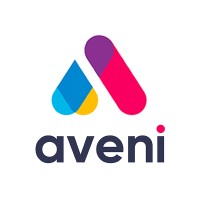
By Gloria Methri
Today
- To come
- Aveni Assistance
- Aveni Detection
Artificial intelligence Financial Technology Aveni has announced one of the largest Series A investments in a Scottish company this year, amounting to £11 million. The investment is led by Puma Private Equity with participation from Par Equity, Lloyds Banking Group and Nationwide.
Aveni combines AI expertise with extensive financial services experience to create large language models (LLMs) and AI products designed specifically for the financial services industry. It is trusted by some of the UK’s leading financial services firms. It has seen significant business growth over the past two years through its conformity and productivity solutions, Aveni Detect and Aveni Assist.
This investment will enable Aveni to build on the success of its existing products, further consolidate its presence in the sector and introduce advanced technologies through FinLLM, a large-scale language model specifically for financial services.
FinLLM is being developed in partnership with new investors Lloyds Banking Group and Nationwide. It is a large, industry-aligned language model that aims to set the standard for transparent, responsible and ethical adoption of generative AI in UK financial services.
Following the investment, the team developing the FinLLM will be based at the Edinburgh Futures Institute, in a state-of-the-art facility.
Joseph Twigg, CEO of Aveniexplained, “The financial services industry doesn’t need AI models that can quote Shakespeare; it needs AI models that deliver transparency, trust, and most importantly, fairness. The way to achieve this is to develop small, highly tuned language models, trained on financial services data, and reviewed by financial services experts for specific financial services use cases. Generative AI is the most significant technological evolution of our generation, and we are in the early stages of adoption. This represents a significant opportunity for Aveni and our partners. The goal with FinLLM is to set a new standard for the controlled, responsible, and ethical adoption of generative AI, outperforming all other generic models in our select financial services use cases.”
Previous Article
Network International and Biz2X Sign Partnership for SME Financing
IBSi Daily News Analysis

SMBs Leverage Cloud to Gain Competitive Advantage, Study Shows
IBSi FinTech Magazine
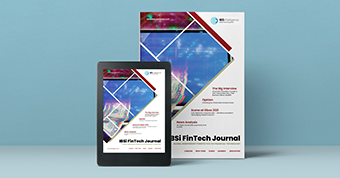
- The Most Trusted FinTech Magazine Since 1991
- Digital monthly issue
- Over 60 pages of research, analysis, interviews, opinions and rankings
- Global coverage
subscribe now
-

 DeFi12 months ago
DeFi12 months agoDeFi Technologies Appoints Andrew Forson to Board of Directors
-

 Fintech12 months ago
Fintech12 months agoUS Agencies Request Information on Bank-Fintech Dealings
-

 News1 year ago
News1 year agoBlock Investors Need More to Assess Crypto Unit’s Earnings Potential, Analysts Say — TradingView News
-

 DeFi12 months ago
DeFi12 months agoSwitchboard Revolutionizes DeFi with New Oracle Aggregator
-

 DeFi12 months ago
DeFi12 months agoIs Zypto Wallet a Reliable Choice for DeFi Users?
-

 News1 year ago
News1 year agoBitcoin and Technology Correlation Collapses Due to Excess Supply
-

 Fintech12 months ago
Fintech12 months agoWhat changes in financial regulation have impacted the development of financial technology?
-

 Fintech12 months ago
Fintech12 months agoScottish financial technology firm Aveni secures £11m to expand AI offering
-
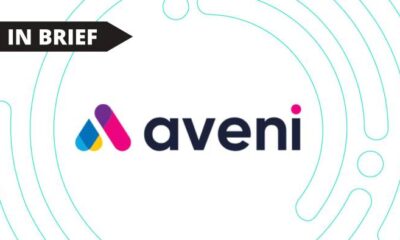
 Fintech12 months ago
Fintech12 months agoScottish financial technology firm Aveni raises £11m to develop custom AI model for financial services
-

 News1 year ago
News1 year agoValueZone launches new tools to maximize earnings during the ongoing crypto summer
-

 Videos5 months ago
Videos5 months ago“Artificial intelligence is bringing us to a future that we may not survive” – Sco to Whitney Webb’s Waorting!
-

 DeFi1 year ago
DeFi1 year agoTON Network Surpasses $200M TVL, Boosted by Open League and DeFi Growth ⋆ ZyCrypto



